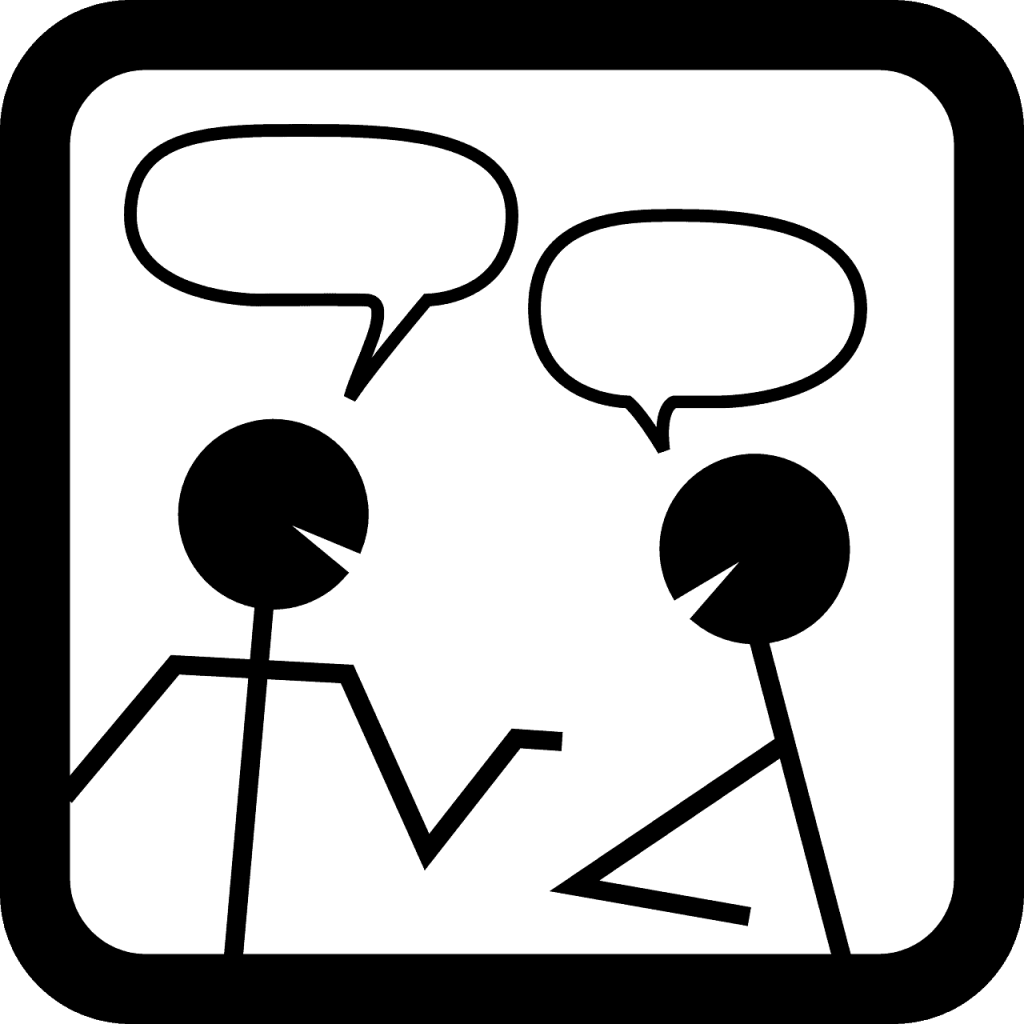
Metadiscourse markers are words or phrases that help connect and organise text, express attitude, provide evidence, to connect the reader to the writer and to ensure that the text ‘flows’ from one idea to the next.
The term was first coined by American linguist Deborah Schiffrin in her 1988 book ‘Discourse Markers’ and studied extensively by numerous linguists since, including Ken Hyland, Annelie Ädel and our own Prof. Stephen Bax.
“Essentially metadiscourse refers to how we use language out of consideration for our readers or hearers based on our estimation of how best we can help them process and comprehend what we are saying…” Hyland explains in his 2017 paper, ‘Metadiscourse: What is it and where is it going?’
In this blog, we’re going to look more closely at what both metadiscourse markers and discourse markers are, provide you with some useful examples and explain why they’re so important when it comes to language use and second language learning.
What do we use Metadiscourse Markers for?
Language users, whether native or non-native speakers use a wide variety of discourse markers across all kinds of texts.
Although the term ‘metadiscourse marker’ is usually used with regard to written texts, these words and phrases are also used on an everyday basis in spoken language. They can also be found in both formal and informal discourse. Here’s how they’re most commonly used, along with some examples.
For ease of reference, we’ve divided them into two groups; formal and informal discourse, although it’s important to bear in mind that there is a great deal of overlap.
Informal Metadiscourse Markers
These metadiscourse markers are used for everyday conversations, relaxed speech and for informal situations like talking to friends, sending instant messages, writing emails, and so on. Here are some examples of their uses.

1. To organise what we say
We can use them to start and end conversations, start new topics and end topics. They can appear in both informal speech but also in more formal texts such as academic essays. For example;
- “Right, I’ll see you on Friday”
- “So, let’s get started.”
- “Anyway, as I was saying, there’s no way I agreed.”
At Text Inspector we refer to these as Topic Shifts.
2. To order what we say
Metadiscourse markers also allow us to say what order things come in. They’re very common in both speech and writing. For example;
- “Firstly, I’ve always loved England. Secondly, my best friend moved there.”
- “In general, I think we need to improve our education system.”
- “What’s more, she’s always been an adventurous person.”
At Text Inspector we call these Sequencing markers
3. To change the way we express things according to who we’re talking to
Many metadiscourse markers are used to help us rephrase or change what we’re talking about when we’re talking to another person. They also also appear in formal contexts. For example,
- “What I mean is, I’d prefer to stay here long term.”
- “Actually, I think that’s a much better choice.”
- “You know, he needs to finish his homework first.”
At Text Inspector, we call these Code glosses.
4. To show that we’re responding
We can use a type of discourse marker called a ‘response token’ to show that we’re listening and engaging with the other person and we want them to continue what they’re saying. For example;
Speaker A: “So there was this massive hole in the ground and I wasn’t looking where I was going…”
Speaker B: “Yeah…”
Speaker A: “And then, before I realised it I’d tripped over and fallen straight in!”
5. To show our attitude or opinion
Metadiscourse markers are frequently used to show how we feel about a certain topic. They’re used across all types of language. For example;
- “I think you’ll be fine.”
- “If you ask me, there’s a lot more that he hasn’t told you”
- “To tell you the truth, I don’t know whether we’ll ever succeed”
At Text Inspector, we call these Attitude Markers.
6. To help soften what we say
Often we’d prefer not to sound too forceful when saying something so we use metadiscourse markers to soften what we say. For example;
“Apparently, he’s the best man for the job.”
“Is this, perhaps, the first time you’ve ever tried kayaking?”
At Text Inspector, we call these Hedges.
7. To introduce a new topic with hesitation
There’s also a type of discourse marker that doesn’t seem like a word at all, but help us to talk about something or introduce a new subject carefully. There are words such as ‘um,’ ‘erm’. For example;
- “Um, would you like to come on a date with me?”
- “She’s…erm…decided that she doesn’t want to see you again, sorry.”
8. To show an emotional response
This type of discourse marker shows a positive or negative response to something. They’re usually just a word or two. For example;
- “Yippee”
- “Ouch”
- “Oh no!”

Formal Metadiscourse markers
As the name suggests, formal metadiscourse markers can be found in more formal writing such as university essays, writing emails, creating documents in work contexts and giving presentations and speeches. They can help organise a text logically, provide evidence for an argument and express a point of view.
1. To announce a new topic
Commonly used in academic essays, this type of metadiscourse marker explains to the reader what the purpose or goal of the text is. For example;
- “In this chapter…”
- “The aim of this research is to…”
- “My purpose in writing this essay is…”
At Text Inspector, we say this is an Announce Goals marker.
2. To show how new ideas relate to older ones
Certain discourse markers help us to connect ideas together and show how they relate to one another. We often use them to build an argument in an academic text, although they can also be used in all kinds of texts at all levels. For example;
- “Morphology and syntax”
- “I want to go to get ice cream but I’m on a diet”
- “Therefore, the task was extremely difficult”
At Text Inspector, we call these Logical Connectives.
3. To show how we feel about a topic
Some metadiscourse markers allow us to express how we feel about a topic, whether we agree with a certain point of view and therefore build an argument. They’re found in all kinds of written and spoken texts, and although we’ve included them in the ‘formal’ group here, they are used just as widely in informal contexts. For example;
- “Admittedly, it wasn’t the right thing to do”
- “I agree with the author when he states that”
- “Amazingly, we were almost finished”
At Text Inspector, we call these Attitude markers.
4. Giving examples and explaining further
When we want to back up our point of view or help readers understand the meanings of certain part of the text, we use metadiscourse markers such as the following;
- “For example…”
- “For instance…”
- “E.g…”
At Text Inspector, we call these Code Glosses.
5. To highlight an argument and to attempt to prove it
There are three related types of metadiscourse marker that help us develop our argument and provide evidence. These include the following;
1) When demonstrating our perspective on a certain topic, especially when we are close to writing a conclusion in an academic essay. For example;
- “It is clear from the evidence that…”
- “Undoubtedly, there would be more challenges on the way”
- “I believe that he is wrong”
At Text Inspector, we call these Emphatics.
2) When directly introducing evidence as it relates to the argument. These are usually found in more formal texts and unsurprisingly, we call them Evidentials. For example;
- “According to a recent study…”
- He cited evidence suggesting she was in the area
- “He pointed out the benefits of daily exercise”
3) When introducing new information, we also use a type of discourse marker that we call Relational markers. Although we’ve included them in the formal section, they can also be used in all types of texts and registers. For example;
- “Let’s consider how often this happens in real life”
- “When we determine the number of combinations…”

6. To conclude the discussion
We can use metadiscourse markers to summarise what has been said, to provide a general opinion and to create a conclusion. This type of discourse marker is usually seen in written texts, but can also be found in spoken contexts. Examples include;
- “On the whole, I believe it was an excellent choice”
- “In conclusion, I would like to thank…”
- “Thus far, the business has been unable to achieve its goals”
At Text Inspector, we call these Label stages.
7. To point out supplementary information
Certain types of documents contain markers to diagrams, illustrations and appendices. For example;
- “See fig.1”
- “Discussed earlier”
- “Chapter six”
At Text Inspector, we call these Endophorics.
Are discourse markers important when it comes to language learning?
Yes, discourse markers are important when learning a second language, especially if we want to move beyond a basic level of language use and towards fluency.
As explained by the British Council in their knowledge database aimed at teachers, “Discourse markers are an important feature of both formal and informal native speaker language. The skillful use of discourse markers often indicates a higher level of fluency and an ability to produce and understand authentic language.”
By using metadiscourse markers, we are able to develop more complex sentences, express our opinions more effectively, adjust our language use effectively according to the needs of the listener or context and become more skilled with the language as a whole.
The findings of a 2019 paper by Stephen Bax, Fumiyo Nakatsuhara and Daniel Waller ‘Researching L2 writers’ use of metadiscourse markers at intermediate and advanced levels’ that analysed 900 exam scripts at CEFR B2-C2 levels also helped shed more light on their importance and use relating to language learning; “…The findings revealed that higher level writers used fewer metadiscourse markers than lower level writers, but used a significantly wider range of 8 of the 13 classes of markers (that are used on Text Inspector)…”
But it’s not just everyday language use that benefits from a better knowledge of metadiscourse markers.
Students taking the IELTS exams (the exams widely used for visa applications in the UK, Canada, New Zealand and Australia and work or study applications abroad) also need to have a clear understanding of discourse markers as they’ll receive marks for this in the IELTS writing and speaking tests. They need to show that their ideas can flow from one idea to the next, using these types of words.
Together, this makes understanding and using these metadiscourse markers extremely important when it comes to learning a language and developing proficiency.

How do we use metadiscourse markers at Text Inspector?
Here’s a list of the metadiscourse markers that we use in the Text Inspector tool. You can refer back to our earlier examples here or visit the Metadiscourse Marker help page for a more comprehensive list.
- Announce Goals (Frame marker)
- Code glosses
- Endophorics
- Hedges
- Logical connectives
- Relational markers
- Attitude markers
- Emphatics (Boosters)
- Evidentials
- Label stages (Frame marker)
- Person markers
- Sequencing (Frame marker)
- Topic shifts (Frame marker)
These categories are based on work carried out by renowned British linguist Prof. Ken Hyland which were then further developed by Prof. Stephen Bax et al in the 2019 paper, Researching L2 writers’ use of metadiscourse markers at intermediate and advanced levels’.
Summary
Metadiscourse markers are used widely throughout all types of language and help organise the text, express the writer’s opinion and ensure that the written or spoken text flows smoothly from one idea to another.
If an individual wants to develop proficiency in a second language, work or study in an English speaking country or succeed at a higher academic level (as both native and non-native speakers), it’s essential that they can effortly use and also recognise these linguistic devices.
Analyse your text for metadiscourse markers today using Text Inspector and discover the language level of your text. Click here.
*Although the term ‘metadiscourse marker’ is usually used to refer to these types of words and phrases found in texts, they are also used widely in speech. As Text Inspector analyses both written and spoken texts, you’ll also find us using the more general word ‘discourse marker’ to refer to those found in both contexts throughout this blog.*
Share
Related Posts

What Are Discourse & Metadiscourse Markers?
23 June, 2022
Metadiscourse markers are words or phrases that help connect and organise text, express attitude, provide […]
Read More ->
Lexical Diversity: An Interview with Aris Xanthos
23 June, 2022
Aris Xanthos is a lecturer and researcher in Humanities Computing at the University of Lausanne, CEO […]
Read More ->
Professor Averil Coxhead: An Interview on using the Academic Word Lists to Boost Your English Language Learning
23 June, 2022
Averil Coxhead is an energetic and friendly Professor in Applied Linguistics in the School of Linguistics […]
Read More ->